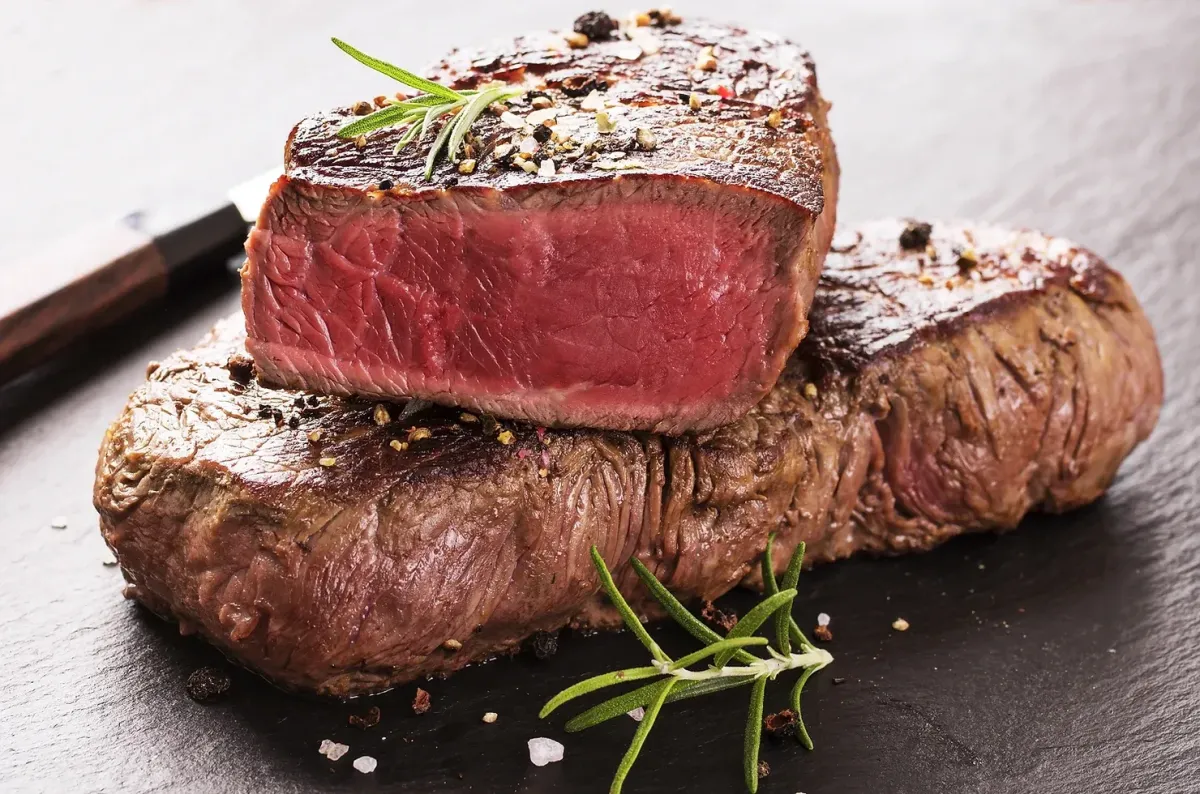
ON THE BLOG

Are You Low In Iron?
Are You Low In Iron?
#thewellnessequation #nutrition #nutritionist #calmhealingspace #iron #absorbingiron #tipstoabsorbiron #healthyliving#lookingafteryourbody #makingthemostofournutritients
Iron is an important mineral to our bodies. It is found in every cell of our bodies, and almost all of it is combined with protein.
The hemoglobin molecule (a protein in our blood) is responsible for carrying oxygen throughout our body and we all know how important oxygen is - without it we would die. This molecule contains 60-70 percent of our body’s iron, so less iron means less oxygen throughout our body. It is also stored in our liver, spleen and bone marrow.
There are two types of Iron:
Heme Iron – Iron from meat. This iron is absorbed much better than its vegetable counterpart. Approximately 40% of this iron is absorbed into your body. Forms of Heme Iron are:
- Beef
- Chicken
- Pork
- Fish
- Shellfish
- Veal
Non-Heme Iron – Vegetable Sources of Iron. Only between 10-30 percent of this iron is absorbed into the small intestine. Different sources of non-heme iron are:
- Whole grains, cereal and oats (fortified grains are good as well, but they are fortified with the ferric form of iron which needs to convert into ferrous in the body to be absorbed
- Dark green leafy vegetables like spinach and kale
- Dried fruits like raisins and apricots
- Beans like lentils and soybeans
Things that hinder Iron Absorption:
1. Over-the- counter antacids (and prescription for that matter) can create an alkaline environment in the digestive system which makes it harder for the body to break down and absorb iron.
2. Low stomach acid and hindered digestion, of which there are many potential causes, may inhibit iron absorption.
3. Fast gastrointestinal mobility can prevent proper iron absorption as this mineral takes 204 hours to be fully digested and absorbed.
4. Coffee and Black Tea contain tannins which hinder the absorption of iron. See the study here.
5. Periods of growth, menstruation, lactation, pregnancy. During these times your body expels more iron and you need to replace it.
6. Oxylates in leafy green vegetables can bind to minerals to hinder the absorption.
7. Excessive calcium intake may compete with iron absorption, especially if in an alkaline environment. Studies suggest that this inhibiting effect of calcium may only occur within a short duration.” (see the study here).
8. The body’s ability to absorb iron naturally diminishes with age.
Things you can do to increase your absorption of Iron:
1. Obtain your Iron from Heme Iron (Animal Sources). It is more easily absorbed, and it contains amino acids, which help stimulate Hydrochloric Acid production.
2. Use Cast Iron Pans – some of the iron leaches from the pans into your foods to increase your iron intake. Cast Iron Pans shouldn’t be used with acidic foods such as tomatoes as it will take the coating off of the pan.
3. Eating citrus fruits/Vitamin C with iron containing foods. Citrus turns the ferric iron form into ferrous iron which is absorbed much better in our bodies. So, when you ingest vitamin C or citrus fruits or other vitamin C containing foods with the iron it will convert the iron into the more absorbable ferrous iron form.
4. Soaking/sprouting/fermentation of your nuts, seeds and grains. Nuts, seeds and grains contain phytic acid which binds to the iron and makes it harder to absorb.
5. Increasing Hydrochloric Acid production
6. Vitamin A / Beta Carotene is the red-orange pigment found in vegetables (good sources are carrots, sweet potatoes, peppers, cantaloupe, squash etc.) One study of 100 people were given grain based meals that contained Vitamin A. It increased iron absorption by up to 200% for rice, 80% for wheat and 140% for corn. Adding beta-carotene increased absorption more than 300% for rice, 180% for wheat and corn. See the study here.
7. Avoid Coffee, Tea, or milk near meals.
Here is a chart outlining the foods that are most concentrated in Iron for your reference.
Foods Most Concentrated in Iron
Are you at risk for low iron? Do you think that your digestion is compromised? Come see us at The Wellness Equation and we can investigate how to improve your iron stores.
Each person is unique, and we develop a personalized plan for each person that walks in our door. Call and make an appointment today at 705-391-6501 or on our booking site here.

Are You Low In Iron?
Are You Low In Iron?
#thewellnessequation #nutrition #nutritionist #calmhealingspace #iron #absorbingiron #tipstoabsorbiron #healthyliving#lookingafteryourbody #makingthemostofournutritients
Iron is an important mineral to our bodies. It is found in every cell of our bodies, and almost all of it is combined with protein.
The hemoglobin molecule (a protein in our blood) is responsible for carrying oxygen throughout our body and we all know how important oxygen is - without it we would die. This molecule contains 60-70 percent of our body’s iron, so less iron means less oxygen throughout our body. It is also stored in our liver, spleen and bone marrow.
There are two types of Iron:
Heme Iron – Iron from meat. This iron is absorbed much better than its vegetable counterpart. Approximately 40% of this iron is absorbed into your body. Forms of Heme Iron are:
- Beef
- Chicken
- Pork
- Fish
- Shellfish
- Veal
Non-Heme Iron – Vegetable Sources of Iron. Only between 10-30 percent of this iron is absorbed into the small intestine. Different sources of non-heme iron are:
- Whole grains, cereal and oats (fortified grains are good as well, but they are fortified with the ferric form of iron which needs to convert into ferrous in the body to be absorbed
- Dark green leafy vegetables like spinach and kale
- Dried fruits like raisins and apricots
- Beans like lentils and soybeans
Things that hinder Iron Absorption:
1. Over-the- counter antacids (and prescription for that matter) can create an alkaline environment in the digestive system which makes it harder for the body to break down and absorb iron.
2. Low stomach acid and hindered digestion, of which there are many potential causes, may inhibit iron absorption.
3. Fast gastrointestinal mobility can prevent proper iron absorption as this mineral takes 204 hours to be fully digested and absorbed.
4. Coffee and Black Tea contain tannins which hinder the absorption of iron. See the study here.
5. Periods of growth, menstruation, lactation, pregnancy. During these times your body expels more iron and you need to replace it.
6. Oxylates in leafy green vegetables can bind to minerals to hinder the absorption.
7. Excessive calcium intake may compete with iron absorption, especially if in an alkaline environment. Studies suggest that this inhibiting effect of calcium may only occur within a short duration.” (see the study here).
8. The body’s ability to absorb iron naturally diminishes with age.
Things you can do to increase your absorption of Iron:
1. Obtain your Iron from Heme Iron (Animal Sources). It is more easily absorbed, and it contains amino acids, which help stimulate Hydrochloric Acid production.
2. Use Cast Iron Pans – some of the iron leaches from the pans into your foods to increase your iron intake. Cast Iron Pans shouldn’t be used with acidic foods such as tomatoes as it will take the coating off of the pan.
3. Eating citrus fruits/Vitamin C with iron containing foods. Citrus turns the ferric iron form into ferrous iron which is absorbed much better in our bodies. So, when you ingest vitamin C or citrus fruits or other vitamin C containing foods with the iron it will convert the iron into the more absorbable ferrous iron form.
4. Soaking/sprouting/fermentation of your nuts, seeds and grains. Nuts, seeds and grains contain phytic acid which binds to the iron and makes it harder to absorb.
5. Increasing Hydrochloric Acid production
6. Vitamin A / Beta Carotene is the red-orange pigment found in vegetables (good sources are carrots, sweet potatoes, peppers, cantaloupe, squash etc.) One study of 100 people were given grain based meals that contained Vitamin A. It increased iron absorption by up to 200% for rice, 80% for wheat and 140% for corn. Adding beta-carotene increased absorption more than 300% for rice, 180% for wheat and corn. See the study here.
7. Avoid Coffee, Tea, or milk near meals.
Here is a chart outlining the foods that are most concentrated in Iron for your reference.
Foods Most Concentrated in Iron
Are you at risk for low iron? Do you think that your digestion is compromised? Come see us at The Wellness Equation and we can investigate how to improve your iron stores.
Each person is unique, and we develop a personalized plan for each person that walks in our door. Call and make an appointment today at 705-391-6501 or on our booking site here.
© the wellness equation - a division of 1954080 ontario inc. 2024.
All rights reserved.


